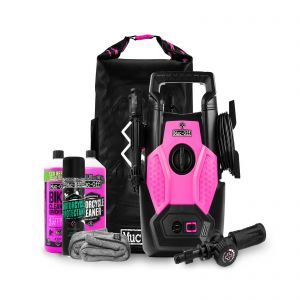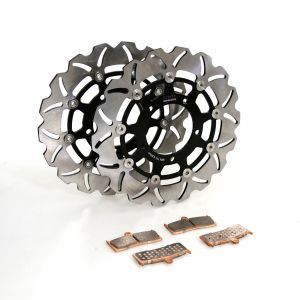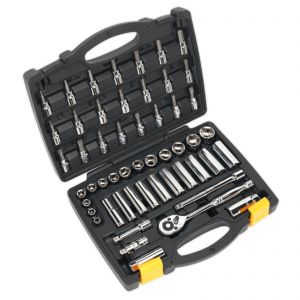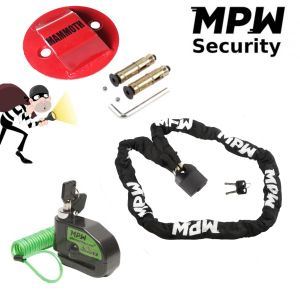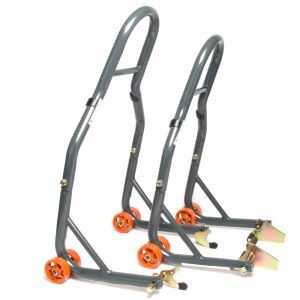Motorcycles and Bad weather - Storing Your Bike
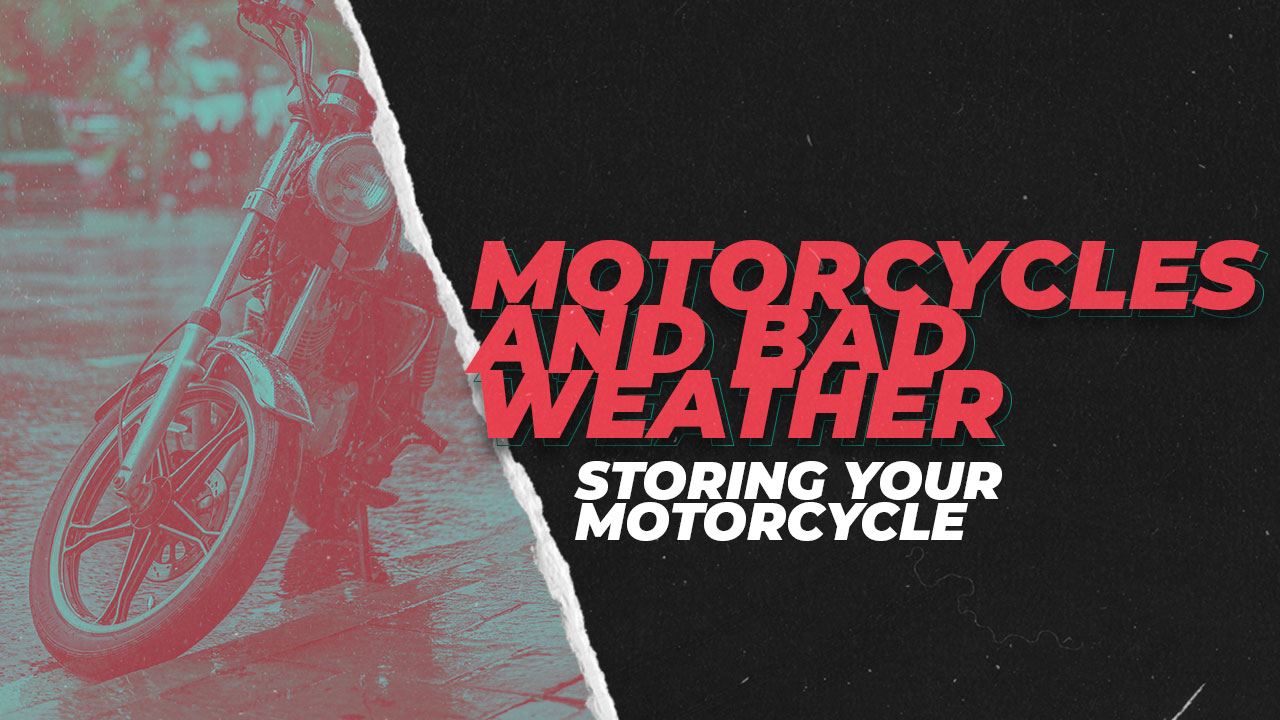
STORING YOUR BIKE OVER WINTER
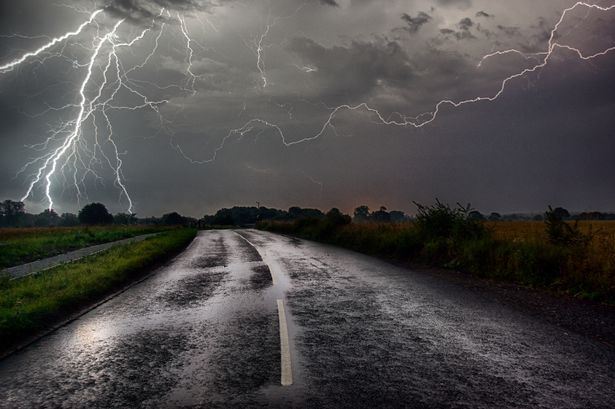
If you decide not to ride through winter the way you store your bike is very important, and there is more to it than you may think. But it is certainly worth the effort. With the right treatment the bike will come out of storage in just as good condition as it went in, with the benefit of it being ready to go with the minimum of fuss when spring arrives.
Before you put the bike away it is important that the bike is clean, and even more important that it is completely dry. The use of a water dispersant spray such as WD40 can help to rid inaccessible areas of moisture. Then you need to pay some attention to all the areas listed below. Follow this guide and your bike will emerge in spring in top condition, and after a few basic checks will be ready to ride.
BATTERY:
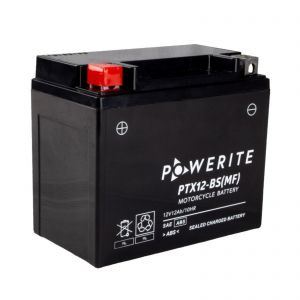
Lead acid batteries suffer in the cold, and they also like to be used. You can remove the battery from the bike and keep it indoors, and give it a charge every few weeks to keep it lively, but bear in mind that, as mentioned later, you need to run your bike very so often and having to remove and refit the battery every time you do this becomes a bit boring. The best thing to do is to connect a bike-specific intelligent trickle charger that keeps the battery charged and ready to go. Most chargers come with an adapter that you leave connected to the battery, then you plug the charger into the adapter, allowing the seat/side panel or whatever to be kept in place. Keep the battery terminals clean and apply a dedicated battery terminal grease or petroleum jelly (Vaseline) to keep corrosion at bay – do not use a mineral grease.
BRAKES:
Keeping your brakes in top condition is essential all-year round. In winter you need to be extra wary of corrosion on the pad pin(s), and on the slider pins if you have a sliding type caliper, and it is best to give each caliper a good clean and check before storing the bike. Apply a smear of copper grease to the pad pin(s), and some silicone grease to the slider pins and rubber boots on sliding calipers, to keep corrosion at bay.
COOLANT:
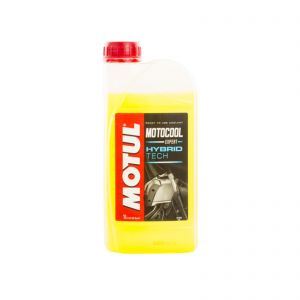
The coolant in liquid-cooled motorcycles is extremely important, and in winter of particular importance is the concentration of anti-freeze. You do not need to add extra, but you do need to make sure that there is enough. Most motorcycles run a 50/50 mix of water and anti-freeze all year round, and this is enough to cope with all conditions. But sometimes a rider may top up with water rather than the correct pre-mix concentration, and this weakens the mix. If it gets too weak, it may not prevent the coolant freezing in sub-zero temperatures. When water freezes it expands, and this can have serious consequences on the cooling system. So check the concentration using an anti-freeze tester, they are not expensive, or drain the system and fill it up with new ready-mix coolant of the type specified by the bike’s manufacturer. At the same time make sure the radiator is fully topped up to prevent condensation forming, as this can cause rust.
COVER:

If you can keep your bike housed in a garage or enclosed shelter you don’t need a waterproof cover, but you do need to keep dirt, dust, insects and anything else off and provide some protection against accidental knocks and scratches. Old blankets, sheets, duvets, sleeping bags etc all work well, and if you don’t have any a charity shop can probably sort you out. Keeping it covered also prevents the possibility of paintwork fading if it stands near a window that lets any sun in, not that there is a vast amount of that around.
If the bike is kept outside a waterproof cover is essential, but a word of warning here – it is easy for condensation, and then rust, to build up under the cover, especially if it is tied down tight and no air can circulate under it. This is where a good layer of protective spray helps. There are some breathable and lined covers that claim to prevent condensation, but they come at a cost and two that I tried years ago did not work very well. Maybe the more you spend the better, but not always. Better practice is to lay a sheet or blanket or some old towels over the bike before putting the waterproof cover on top. In my opinion you can’t beat the old-style green canvas covers but they are not as readily available as they used to be. Whatever cover you use keeping air circulating around the bike is important, and bear in mind that the air in garages can become damp. Ideally keep the bike in the living room or a spare bedroom, but get permission first.
FUEL:
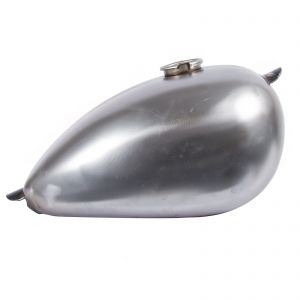
The full tank/empty tank debate. The aim of both practices is to prevent the inside of the tank rusting, and from that point of view it makes more sense to brim it, then there is no way moisture can form on metal. If you are an empty tank person consider firstly that it is actually very difficult to completely remove all the fuel, and the little that remains will quickly destabilise, and secondly that it is best to run the bike every so often when it is being stored, and for that you need fuel. The two considerations that favour the full tank argument are firstly the fact that you need to run the bike, and secondly that the bike is ready to go when the weather gets good again. For those who argue about the ethanol absorbing water and the destabilisation of fuel there are plenty of good fuel treatment additives available that counter both these things, simply add the recommended amount when you fill the tank then run the bike for a few minutes so it gets through the entire system.
If your bike has carburettors make sure the fuel tap is closed and drain the fuel out of the float bowls.
GENERAL LUBRICATION AND PROTECTION:
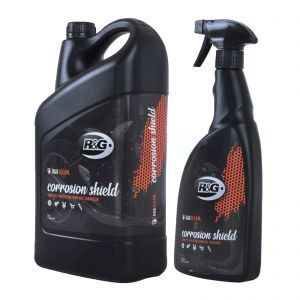
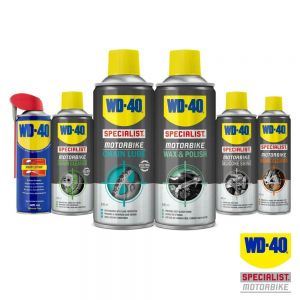
Give the bike a good clean, dry it thoroughly, then lubricate the chain and apply a protection spray – there are many protective sprays available, select the ones that best suit your needs and bike and follow the instructions on the can. To avoid spray getting on brake components and tyres apply it to a clean rag then wipe the rag over adjacent parts like the wheels, forks and swingarm. It is good to lubricate moving parts such as brake and clutch levers, cable ends, gearchange linkages, and stand pivots, and to do this it is best to remove them so all dirt and old lubricant can be cleaned off before applying fresh lube and refitting the part. Lubricating unlined throttle and clutch cables is also good, and a cable oiler makes this task easy. Lined cables, as fitted to most modern bikes, should not be lubricated. If you are unsure check your handbook.
Avoid using a high-pressure jet wash to clean the bike as it is easy to blast water past the seals for the wheel bearings, steering head bearings and suspension linkage bearings and wash the grease away. Once this happens the seals will continue to let water and dirt in and this will eventually lead to bearing failure and a lot more work. Dedicated motorcycle washers such as the Muc-Off pressure washer work on a lower pressure but it is still best to avoid the seals.
MAINTENANCE:
If you haven’t changed the engine oil recently it is a good idea to do so before you store the bike – contaminants build up as oil is used and these can corrode internal components, and any sludge will sink to the bottom of the sump or tank and be the first thing to circulate when the engine is run. The same goes for coolant – over time it loses its anti-corrosion properties and should be changed every two or three years depending on the type specified for your bike. It is also a good idea to remove the spark plug(s) and spray some oil into the combustion chamber(s).
Winter is an excellent time to carry out those less frequent but more involved maintenance tasks that often get neglected when the bike is in constant use. Things like re-greasing the steering head bearings and checking their adjustment, re-greasing the swingarm, shock absorber and suspension linkage pivots and bearings, checking valve clearances, changing the coolant, brake fluid and fork oil, checking wheel bearings, checking the condition of fuel and coolant hoses, fitting new brake caliper and master cylinder seals. There is always something to do, though many of the tasks mentioned do require some mechanical know-how and a workshop manual (see Note below). The good thing is that there is no rush to get the job done because you don’t need the bike first thing in the morning, and it is usually fine to leave the job half-way through and come back to it as long as you cover stuff up and keep everything clean and correctly stored. It is also a good time to do the basic maintenance well in advance of the first spring ride, things like changing the engine oil and filter and checking or changing the spark plug(s) and air filter. And when you have done all that you can fit all the nice new gadgets and accessories you bought yourself for Christmas.
Note: MPW are pleased to announce that we will soon have the full range of Haynes and Clymer Service and repair Manuals available to buy on our website.
RUNNING THE ENGINE:
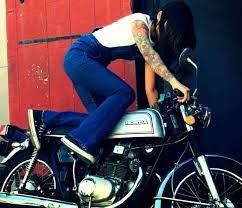
Condensation can form in the exhaust, which will slowly rot it, and in the crankcase, which will get into the oil and emulsify it. To counter this run the engine up to its normal working temperature, until the fan kicks in on liquid-cooled bikes, every week or two. To reduce the amount of condensation in the exhaust you can spray a little WD40 into the silencer then block the end with rag, but make sure you remove the rag when you run the bike. It is a good idea to block the air intake into the airbox as well – an airbox makes a cosy little house for mice, and they chew on the filter. Again, don’t forget to remove the rag or the bike won’t run very well - leave yourself a reminder note stuck over the ignition switch. After running the bike let it cool before you put the cover back on – removing melted stuff from a hot downpipe will keep you frustrated for hours.
SECURITY:
It goes without saying that wherever you store the bike you must lock it up and keep it insured. The alarm, if you have one, goes some way to deterring winter thieves, but extra precautions such as a sturdy chain and a ground anchor are worthwhile. Keeping your bike insured is essential even if you have a brick garage locked up like Fort Knox – you never know when a tree might land on the roof. An alarm drains the battery, another good reason to use a trickle charger.
TYRES:
Tyres do not like to be left in one position with the weight of a bike on them for prolonged periods, especially if the pressure in them gets low, as the side wall deforms and might not return to its true shape. The best way to prevent this is to store the bike on paddock stands, one for the front and one for the rear, so both tyres are off the ground - you do not have to spend much to get a good set of stands. They are a worthwhile expense and are available for both single and double-sided swingarms.
If you do not have paddock stands but you do have a centrestand use it in preference to the sidestand so only one wheel is on the ground and with less weight on it. Most bikes on a centrestand will sit with the front wheel on the ground and the rear wheel off, so what you could also do is place a jack under the engine and raise it to take the weight off the front, ideally getting both wheels off the ground, though this will depend on the height of the stand and the balance of the bike. You will at least be able to reduce the amount of weight through the tyre. If your bike sits on its rear wheel when on the centrestand place the jack under the swingarm.
Check the tyre pressures regularly using an accurate pressure gauge and keep them over-inflated by a few psi, making sure you do not exceed the maximum inflation marked on the sidewall – this not only reduces the potential for deformation, but also counters the gradual drop in pressure that goes with lowering temperatures and the slight leakage that naturally occurs. Rotate the wheels every couple of weeks so that different parts of the tyre take a turn in supporting the weight. Another trick is to put some old carpet under each wheel, or better still treat yourself to a garage mat. Or maybe keep the bike in the living room? On a garage mat of course.
